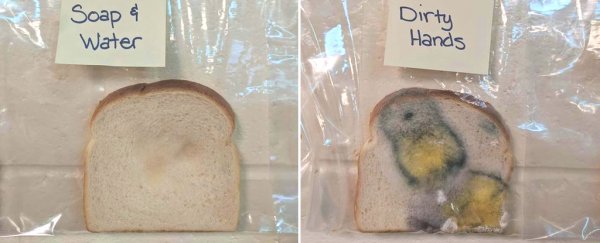Washing your hands is important. Really important. But how can you visually demonstrate the importance of this valuable life skill to kids?
As teacher Dayna Robertson from Discovery Elementary School in Idaho Falls recently showed on social media, all you need are a few slices of bread.
Together with co-worker and behavioural specialist Jaralee Metcalf, Robertson conducted this classic classroom activity with their students: they got the kids with various levels of hand cleanliness to touch pieces of plain white bread taken from the same loaf on the same day.
Then, they sealed the bread in individual plastic bags to see what would happen one month later.
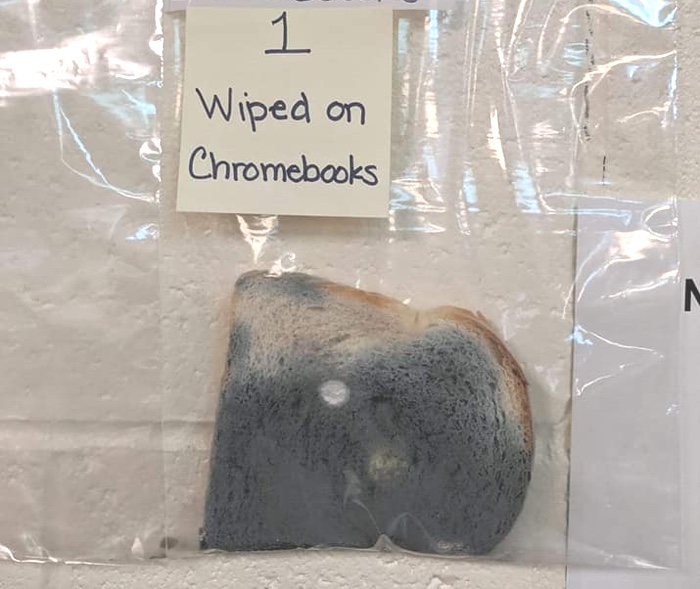 (Jaralee Annice Metcalf/Facebook)
(Jaralee Annice Metcalf/Facebook)
"We took fresh bread and touched it," Metcalf explains in a viral Facebook post that's now been shared some 65,000 times and counting.
"We did one slice untouched. One with unwashed hands. One with hand sanitiser. One with washed hands with warm water and soap. Then we decided to rub a piece on all our classroom Chromebooks."
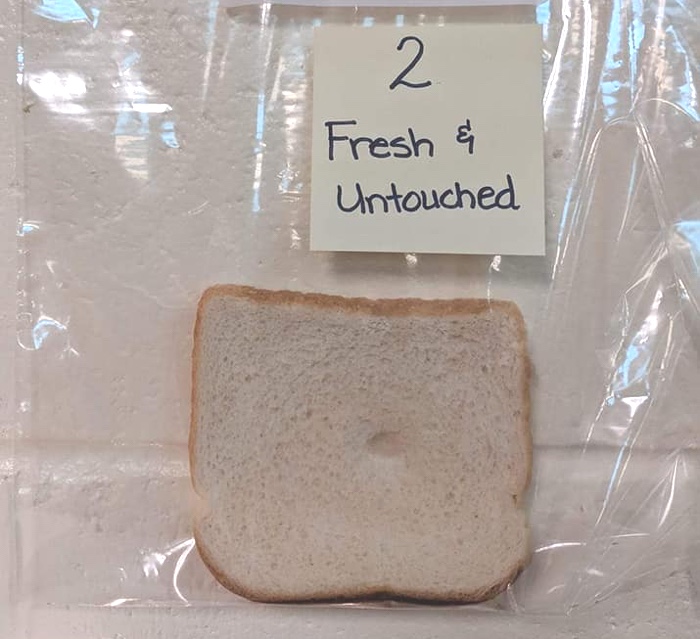 (Jaralee Annice Metcalf/Facebook)
(Jaralee Annice Metcalf/Facebook)
That Chromebook-rubbed specimen did not fare well. Neither did any of the other touched slices of bread, with the sole exception of the 'soap & water' slice (and of course the 'control' slice, which was quickly sealed into its bag without being grubbed all over by little hands).
As you can see, the untouched slice looks fine, as does the 'soap & water' piece for the most part, except for a firm imprint resulting from a classroom's worth of bread-touching.
The other pieces of bread? Not so fine.
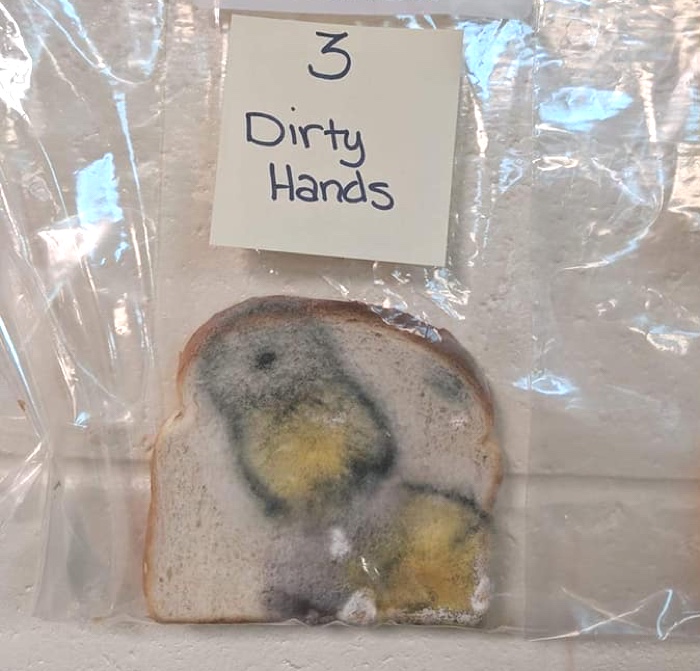 (Jaralee Annice Metcalf/Facebook)
(Jaralee Annice Metcalf/Facebook)
The 'Chromebook' and 'dirty hands' slices are covered in spectacular mould growths resulting from microbial contaminants, and the 'hand sanitiser' slice is a clear example that hand sanitiser by itself is no substitute for proper hand-washing.
The experiment the class conducted is the kind of thing teachers have been showing their students for years; the instructions Robertson and Metcalf followed are written up at the website of C.S. Mott Children's Hospital in Michigan.
(While it is a classic classroom experiment conducted all around the world, any teachers reading this would need to check their school's health and safety procedures before diving in, as not all jurisdictions are happy with their students growing microbe farms.)
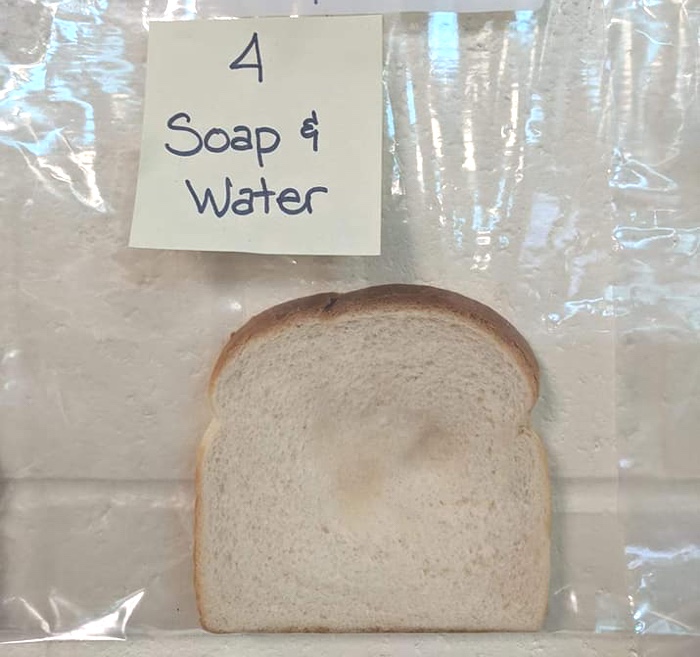 (Jaralee Annice Metcalf/Facebook)
(Jaralee Annice Metcalf/Facebook)
Full details on what you need for the 'hand hygiene experiment' are listed there, as is a good brief explainer on the why and how of proper hand-washing technique.
"You should wash your hands before, during, and after preparing food," explains staff epidemiologist Terri Stillwell.
"Also wash before you eat, after using the restroom, after blowing your nose, after touching animals, and any time your hands appear dirty."
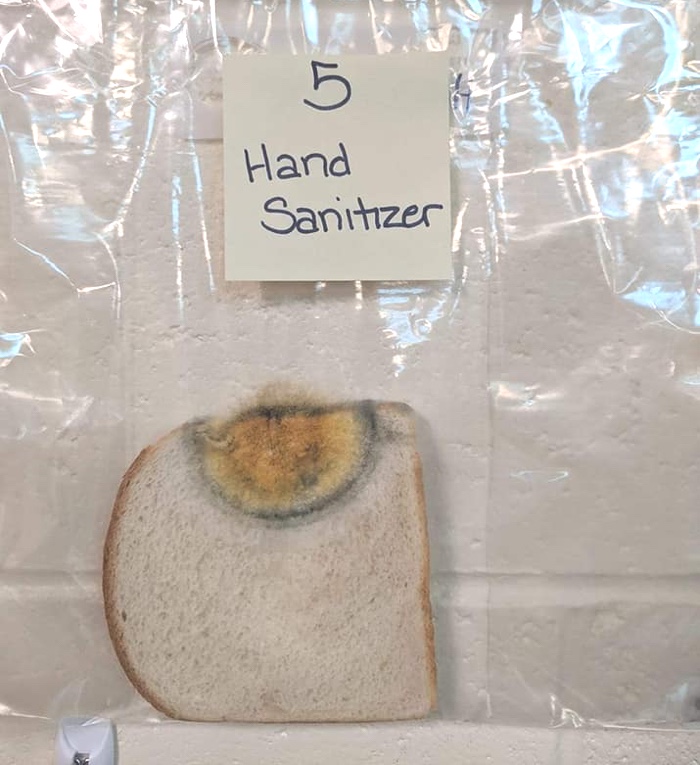 (Jaralee Annice Metcalf/Facebook)
(Jaralee Annice Metcalf/Facebook)
That's a long list, sure, but it's an important way to stop the spread of infectious pathogens and diseases, given all the filthy things we touch all the time.
Sadly, research shows that despite all these reasons to correctly wash your hands, lots of people don't follow through, and even when they try, they may not wash their hands adequately.
Hopefully, for at least one classroom of kids in Idaho, the importance of hand washing is now a life-long lesson learned, all thanks to a simple demonstration that seems to have sufficiently grossed them out.
"The students all thought it was gross," Robertson told Today.
"They have really turned their hand-washing around. They realised that sanitiser doesn't cut it, and they've got to do soap and water."
